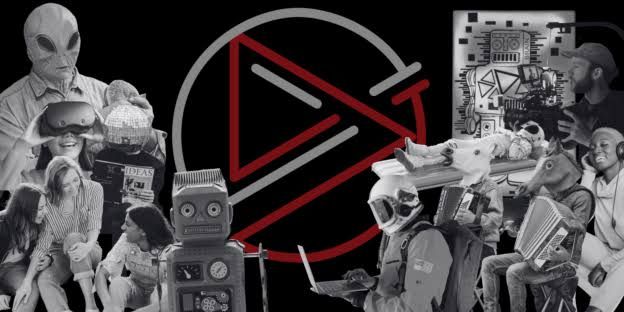Isolated and Fragmented Communities in the Echo Chamber: A Brave New World
Introduction Imagine a world where each community, no matter how small or large, is not only physically separate but ideologically isolated. A world where differing viewpoints are not a cause for conversation and learning but an unwelcome intrusion into a carefully cultivated echo chamber. This concept, once a cautionary tale

Introduction
Imagine a world where each community, no matter how small or large, is not only physically separate but ideologically isolated. A world where differing viewpoints are not a cause for conversation and learning but an unwelcome intrusion into a carefully cultivated echo chamber. This concept, once a cautionary tale spun by social scientists, has become an alarming reality as we march further into the 21st century.
In this brave new world, we grapple not only with the challenges of isolation and fragmentation but also with their intersection with vital areas of life, such as public health and emergency preparedness. Medical Countermeasures (MCMs), tools that can be used to diagnose, prevent, or treat conditions associated with emerging health threats, are especially affected.
As we stand on the precipice of this new era, it is crucial to unravel the complexities of these isolated and fragmented communities in the echo chamber, understand their implications on MCMs, and explore strategies to effectively navigate this landscape. This comprehensive exploration serves as a guide to understanding this phenomenon and illuminating a path forward for us all.
The Echo Chamber Effect
The "Echo Chamber" - a term that has gained significant traction in recent years - is a metaphorical description of a situation where certain ideas, beliefs, or data points are amplified or reinforced by repetition inside a "closed" system and insulated from rebuttal. With the advent of digital technology and the proliferation of social media platforms, the echo chamber effect has taken on new dimensions, intensifying divisions and increasing ideological isolation.
Picture a vast labyrinth, with thousands of isolated chambers. Inside each, the same notes are struck over and over again, the echoes growing louder with each repetition. The occupants of each chamber hear these echoes, these affirmations of their own beliefs, so often that they begin to accept them as unquestionable truths. This is the echo chamber effect in action, a phenomenon enabled by the architecture of our digital communication systems.
Social media platforms, designed to engage and retain users, often employ algorithms that show users content similar to what they have liked or shared in the past. While this can help individuals find content that interests them, it also narrows the range of information they encounter, reducing exposure to differing viewpoints and promoting ideological isolation.
In these echo chambers, the shared beliefs and narratives reinforce each other, strengthening group identity and cohesion. However, the lack of exposure to counter-arguments or differing opinions can lead to extremism, lack of critical thinking, and resistance to change. The ideas within an echo chamber can quickly become polarized, and individuals inside the chamber can become more radical in their views.
Echo chambers are not restricted to any specific ideology or belief system. They can form around political ideologies, health beliefs, scientific concepts, and more. What they share is a common structure: a closed system, where the same ideas are amplified and reinforced, insulated from external critique.
With this understanding of the echo chamber effect, it becomes clear that such an environment presents significant challenges for the effective communication and implementation of MCMs. In the next section, we delve into these challenges and their implications for public health.
Medical Countermeasures (MCMs) in the Digital Age
Medical Countermeasures (MCMs) refer to the ensemble of FDA-regulated products that can be used in potential public health emergencies involving infectious diseases, including vaccines, medications, diagnostic tools, and other necessary medical equipment. These are essential tools in combating outbreaks and ensuring public health safety. However, the digital age has brought forth a new set of challenges in the realm of MCMs - challenges largely rooted in the spread of information, misinformation, and disinformation in online echo chambers.
In the digital age, MCMs' development, approval, and deployment processes often take place in the public eye. The speed and transparency can be advantageous, providing the public with an understanding and confidence in the countermeasures being proposed. However, this visibility also opens up these processes to critique and misinformation. In the context of an echo chamber, this can lead to the rapid spread of misinformation about MCMs, fueled by fear, misunderstanding, or mistrust.
One particularly prevalent form of misinformation is the propagation of vaccine myths. In the confines of an echo chamber, where dissenting voices are often silenced, these myths can spread unchallenged, leading to vaccine hesitancy and resistance. This poses a significant risk to public health as it can result in lower vaccination rates, threatening herd immunity and prolonging the duration of outbreaks.
Another issue that arises is the spread of unverified or misleading information about emerging diseases or health threats. In the echo chamber environment, such information can spread rapidly, sowing fear and panic. This can lead to inappropriate use of MCMs, as people attempt to self-medicate or protect themselves based on inaccurate information.
Lastly, the echo chamber can also foster an environment of mistrust towards health authorities and scientists. Conspiracy theories or narratives painting these entities as corrupt or harmful can spread within echo chambers, leading to resistance towards MCMs and other public health initiatives.
As we move forward in the digital age, it is essential to understand the role echo chambers play in shaping public perception and response to MCMs. Navigating this complex landscape requires a comprehensive approach that addresses misinformation, encourages open dialogue, and fosters trust in public health authorities. Let's explore this further in the next section.
The Intersection of MCMs and the Echo Chamber
In a world characterized by the echo chamber effect, where information is carefully curated to reinforce existing views, and dissenting opinions are often drowned out or ignored, medical countermeasures (MCMs) face unique challenges. These issues span across the entire lifecycle of MCMs, from development and approval to distribution and uptake. In the echo chamber, a single piece of misinformation can quickly ripple across the network, causing widespread confusion, mistrust, and potentially disastrous public health outcomes.
The intersection of MCMs and the echo chamber can be viewed through several critical lenses, which together paint a picture of the complexities involved in public health communication and policy implementation in the digital age.
Misinformation and MCMs
Misinformation, defined as false or inaccurate information, particularly that which is deliberately intended to deceive, poses a significant threat to the successful implementation of MCMs. Whether it's a misguided social media post claiming a vaccine causes an unlikely side effect or a highly organized disinformation campaign aimed at undermining trust in public health institutions, the echo chamber can rapidly amplify these misleading narratives.
Within the closed loop of an echo chamber, a false story about an MCM can easily circulate without correction, leading to widespread public fear and resistance. This can seriously hamper efforts to control or eradicate a public health threat.
Polarization and MCMs
The echo chamber effect often leads to polarization, with different groups living in their separate information realities. When it comes to MCMs, such polarization can result in varying levels of acceptance and uptake. For instance, one echo chamber might promote vaccination and preventative measures, while another might fuel skepticism and resistance.
This can lead to inconsistent implementation of MCMs, creating geographical or demographic 'pockets' where public health measures are less effective. This uneven landscape can be particularly problematic during a pandemic, where coordinated, widespread action is required.
Trust and MCMs
In an echo chamber, trust can be both a valuable asset and a significant liability. On the one hand, a community's trust in its sources of information can promote adherence to public health guidelines and uptake of MCMs. However, this trust can be exploited to spread misinformation, leading to misguided actions and health behaviors.
In a fractured information environment, restoring and maintaining public trust in health institutions and MCMs is a constant challenge. It requires transparency, frequent communication, and efforts to counteract misinformation.
In the next section, we will look at the strategies and considerations for navigating the echo chamber to effectively communicate about and implement MCMs.
Case Study: The SPARS Pandemic Scenario
To better understand the dynamics at the intersection of MCMs and the echo chamber, let's take a look at a case study: The SPARS Pandemic scenario. This hypothetical scenario, developed by Johns Hopkins Center for Health Security, paints a vivid picture of a future public health crisis and the communication challenges it presents.
In this scenario, set in the years 2025-2028, the world is simultaneously more connected yet more divided. Internet access is nearly universal, facilitated by innovative technology, but people have become increasingly selective about the sources of information they trust. As a result, self-imposed echo chambers are more prevalent and more potent than ever before.
The SPARS Pandemic in this scenario is caused by a novel coronavirus, resulting in a global public health crisis. The development and distribution of a vaccine—termed "Corovax"—form a significant part of the response to the pandemic. However, the process is fraught with communication dilemmas and challenges, many of which are exacerbated by the echo chamber effect.
Misinformation and Fear
In the SPARS scenario, misinformation spreads quickly within echo chambers, causing fear and confusion about the safety and effectiveness of Corovax. Some groups propagate the belief that the vaccine is part of a government plot to control the populace, while others spread stories about severe side effects. These narratives, circulated and reinforced within echo chambers, significantly hinder the uptake of Corovax and thus the containment of the pandemic.
Polarized Response
The echo chamber effect also results in polarized responses to the SPARS pandemic and the Corovax vaccine. Some communities, based on their trusted sources of information, embrace the vaccine and adhere to public health measures, while others resist. This inconsistency in response leads to unequal health outcomes across different communities, prolonging the crisis and leading to avoidable deaths.
The Trust Crisis
Finally, the scenario illustrates the erosion of trust in health institutions and the government, fueled by misinformation, polarized responses, and perceived missteps in handling the crisis. This lack of trust poses a significant barrier to the effective implementation of MCMs and makes it more difficult to dispel myths and correct misinformation about Corovax.
This case study underscores the urgent need for effective strategies to navigate the echo chamber and ensure clear, reliable communication about MCMs in future public health emergencies. In the next section, we will explore potential strategies for achieving this.
Navigating the Future
As our world evolves, becoming more digitally connected yet ideologically divided, the challenge of effectively communicating about MCMs in an echo chamber environment only grows. So, how can we prepare for such a future? How can we ensure that truth and scientific evidence remain accessible and persuasive, even amidst the noise of misinformation and conspiracy theories? Here are some strategies:
1. Proactive Public Health Communication:
Public health entities need to prioritize proactive and transparent communication. Rather than reacting to misinformation after it has spread, these entities should aim to be the first to deliver information to the public, establishing themselves as trusted sources. Furthermore, they should explain their processes and decision-making clearly, to build public understanding and trust.
2. Harnessing the Power of Social Media:
Social media platforms are central to the echo chamber phenomenon. They can be part of the problem, amplifying misinformation, but they can also be part of the solution. By actively engaging on these platforms, public health entities can reach people within their own echo chambers, countering misinformation directly and promoting reliable information.
3. Collaborating with Influencers:
Influencers, whether celebrities or respected community leaders, can play a significant role in shaping public opinion. Public health entities can collaborate with these individuals to deliver important messages, leveraging their reach and credibility.
4. Promoting Media Literacy:
Media literacy education can empower individuals to critically evaluate the information they encounter online. By promoting such education, we can equip people to resist misinformation and seek out reliable sources.
5. Engaging with Echo Chambers:
Lastly, public health communicators should not ignore or dismiss echo chambers. Instead, they should engage with them, understanding the concerns and beliefs within these groups, and addressing them respectfully and effectively.
The echo chamber and the challenges it presents to MCM communication is not an insurmountable problem. With the right strategies and a proactive approach, we can ensure that our interconnected yet fragmented world is well-prepared to handle future public health crises. The task is undoubtedly complex and requires continuous effort and adaptation. But the stakes are high, and the reward—a healthier, more resilient society—is well worth the effort.
Conclusion
As we journey into the future, we find ourselves navigating the complexities of an ever-more connected yet divided world. The echo chamber phenomenon, exacerbated by the proliferation of digital media, is shaping our societal discourse in ways that can pose serious challenges to public health communication, particularly in the context of Medical Countermeasures (MCMs).
Understanding the echo chamber effect is crucial if we are to counter misinformation, particularly during public health crises. Our ability to reach people with accurate, timely information about MCMs can have a profound impact on health outcomes. We have explored the potential hurdles, examined the SPARS Pandemic scenario as a case study, and charted possible strategies to address this issue effectively.
This exploration is more than an academic exercise—it's a call to action for all stakeholders in the public health and communication sectors. Government agencies, healthcare organizations, digital platforms, and individuals all have a role to play in ensuring that we can navigate the echo chamber without losing sight of scientific truth and public health imperatives.
The task is undoubtedly challenging, and the stakes are high. But by understanding the dynamics at play and proactively developing strategies to address them, we can aim to ensure that truth and scientific evidence remain at the heart of our public health discourse, no matter how loud the echo chamber becomes.
In the end, it's about building a future where our digital connectivity is a force for truth and health, rather than misinformation and division. We have the tools and the knowledge to make this happen. Let's make sure we use them to their fullest potential.




